The Banksia is one of Australia’s iconic flowering plants. Popularised as the ‘bad Banksia Man’ in May Gibbs’ stories of ‘Snugglepot and Cuddlepie’, they are easily recognisable with their characteristic flower spikes and the fruiting cones.
Check out some of the genus/species listed, and come back as we add more over time… “what a wonderful world… we live in…”
BanksiaBanksia Index Banksia ashbyi (Ashby’s Banksia) Banksia baxteri (Baxter’s Banksia) Banksia caleyi (Red Lantern Banksia / Caley’s Banksia) Banksia ericifolia Banksia grandis (Bull Banksia) Banksia integrifolia ssp. integrifolia Banksia media (Southern Plains Banksia) Banksia praemorsa (Cut-leaf Banksia) Banksia prionotes (Acorn Banksia) Banksia quercifolia (Oak-leaved Banksia) Banksia serrata (Saw Tooth Banksia) Banksia spinulosa x ericifolia ‘Giant Candles’
— see Banksia aculeata (Prickly Banksia), Banksia nutans var. cernuella

The variety and popularity of the banksia have seen species grown outside their normal range in other parts of Australia, especially in the many botanic gardens and reserves. The following Oak-leaved Banksia (Banksia quercifolia) occurs naturally in the south coast of Western Australia.
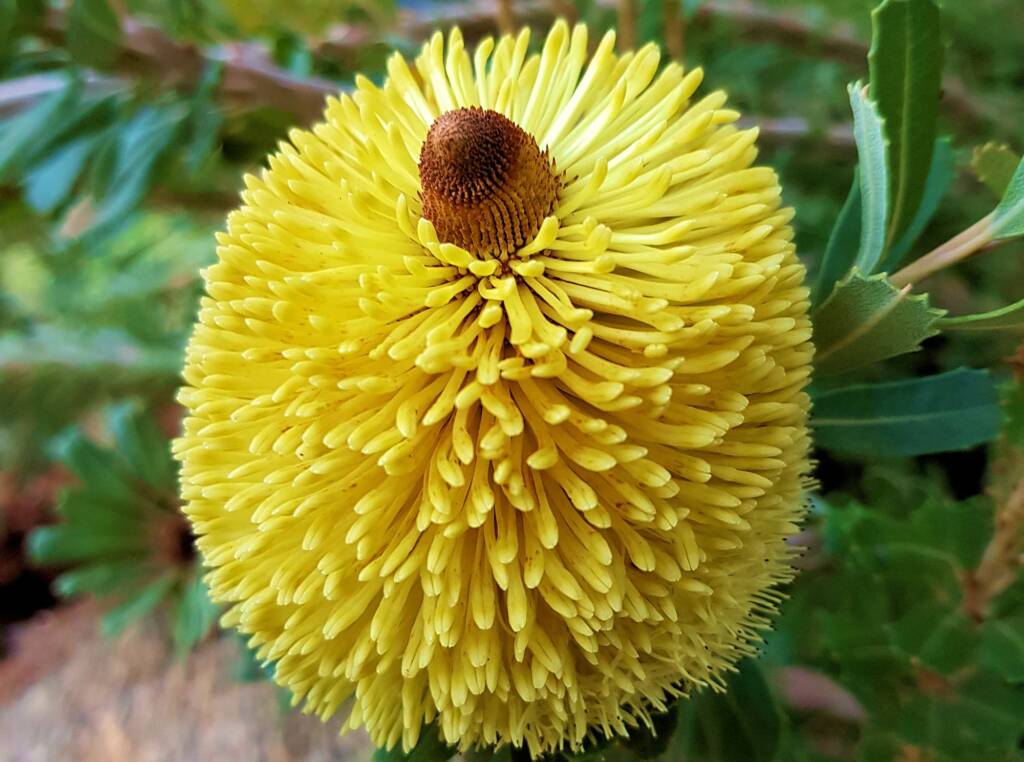
Uniquely Australian, the Banksia are magnificent relics from the once super-continent of Gondwana. Named after the botanist Joseph Banks, the genus Banksia is a member of the family Proteaceae family and was first collected by Joseph Banks and Daniel Solander at Sydney in 1770. There were several species of Banksia kept in England in heated glasshouses due to their cold sensitivity.1
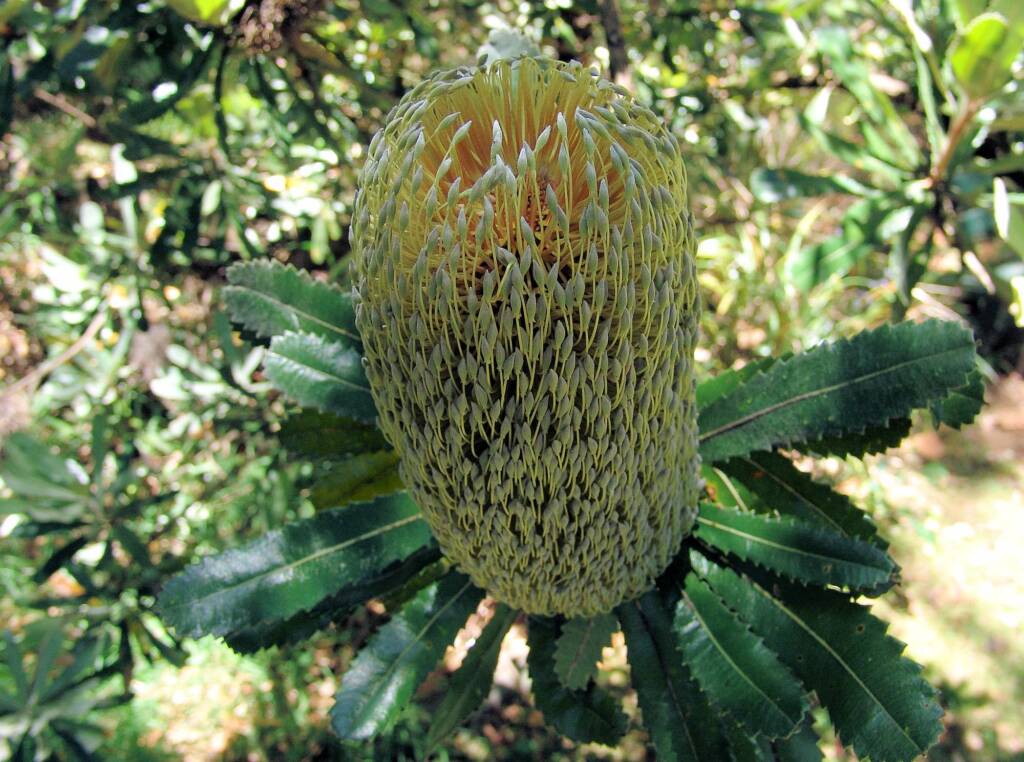
Banksias are found growing in a variety of habitats, depending on the species, from the sclerophyll forest, (occasionally) rainforest, shrubland and arid zones. As well as still found growing in their natural habitats, they have also been established in gardens and parks around the country. The plant can range from a prostrate woody shrub to trees growing up to 30 metres high.
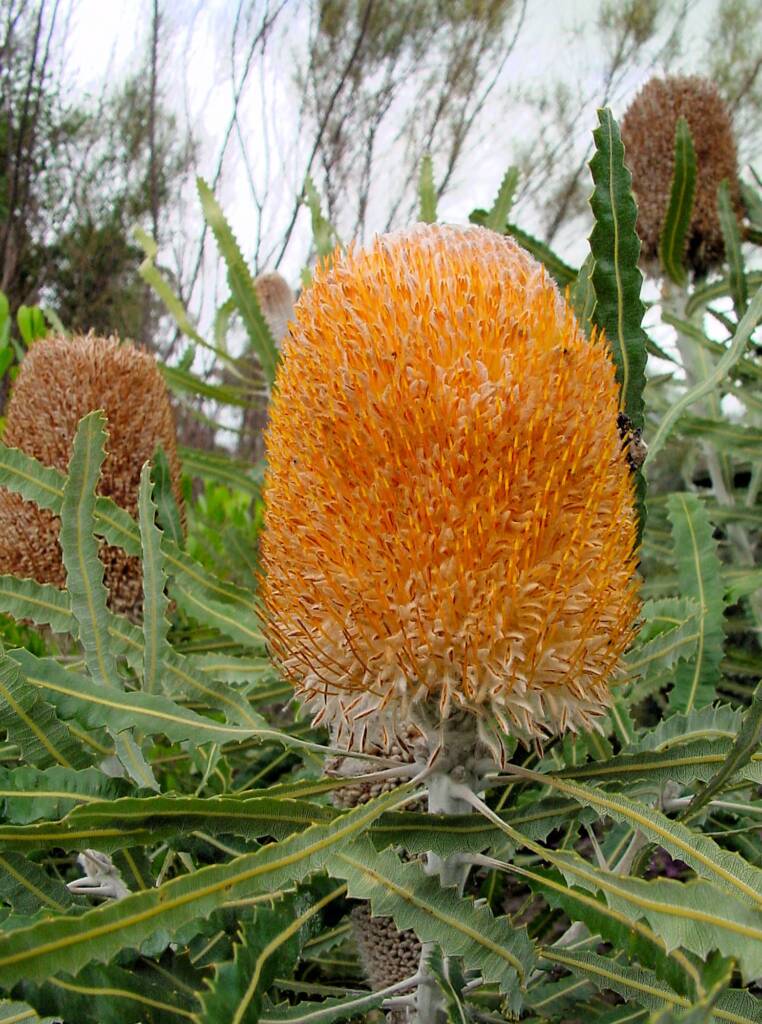
A great plant that also attract a variety of wildlife, especially in the bush where they form an important part of the food chain. The banksia flowers are an important part of nature’s food chain, as they are heavy producers of nectar, that are important for a variety of animals, insects and invertebrates. With the modern techniques of cultivation, they have also become an important part of the nursery and cut flower industry.
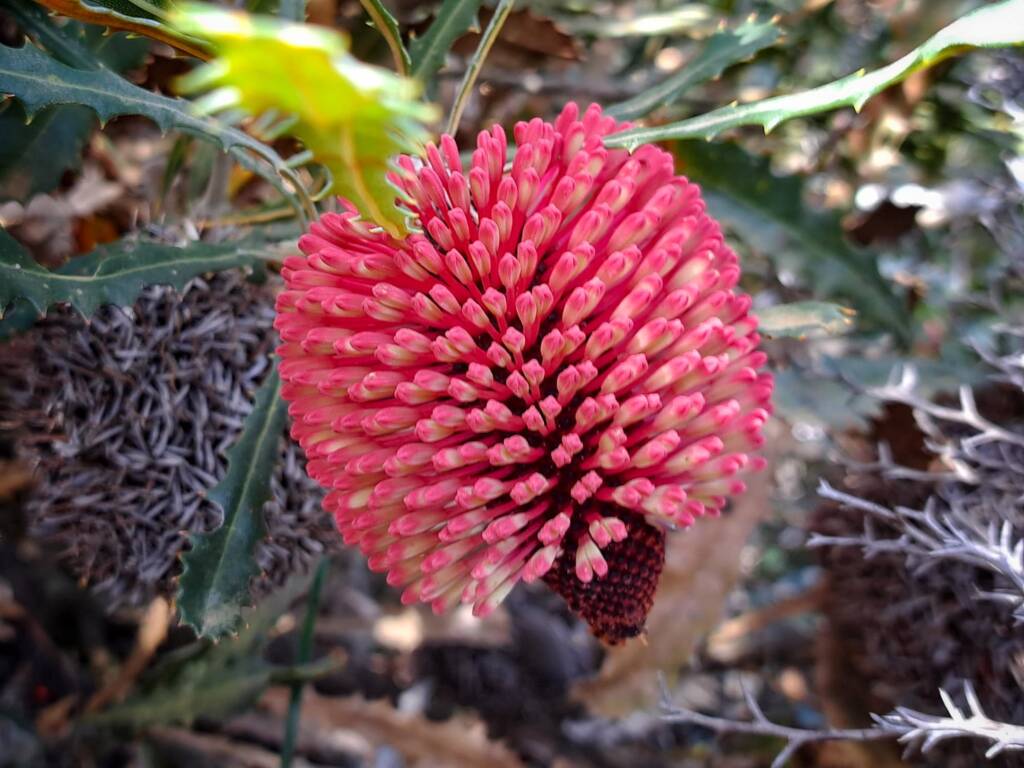
- Scientific classification
- Kingdom: Plantae
- Clade: Tracheophytes
- Clade: Angiosperms
- Clade: Eudicots
- Order: Proteales
- Family: Proteaceae
- Subfamily: Grevilleoideae
- Tribe: Banksieae
- Genus: Banksia
- Species: About 170 species

Footnote & References
- Banksia, Seed Notes for Western Australia – No. 8, Department of Biodiversity, Conservation and Attractions, Government of Western Australia, https://www.dpaw.wa.gov.au/images/documents/about/science/pubs/seednotes/sn08_banksia.pdf
- Banksia, https://en.wikipedia.org/wiki/Banksia (last visited Dec. 8, 2021)
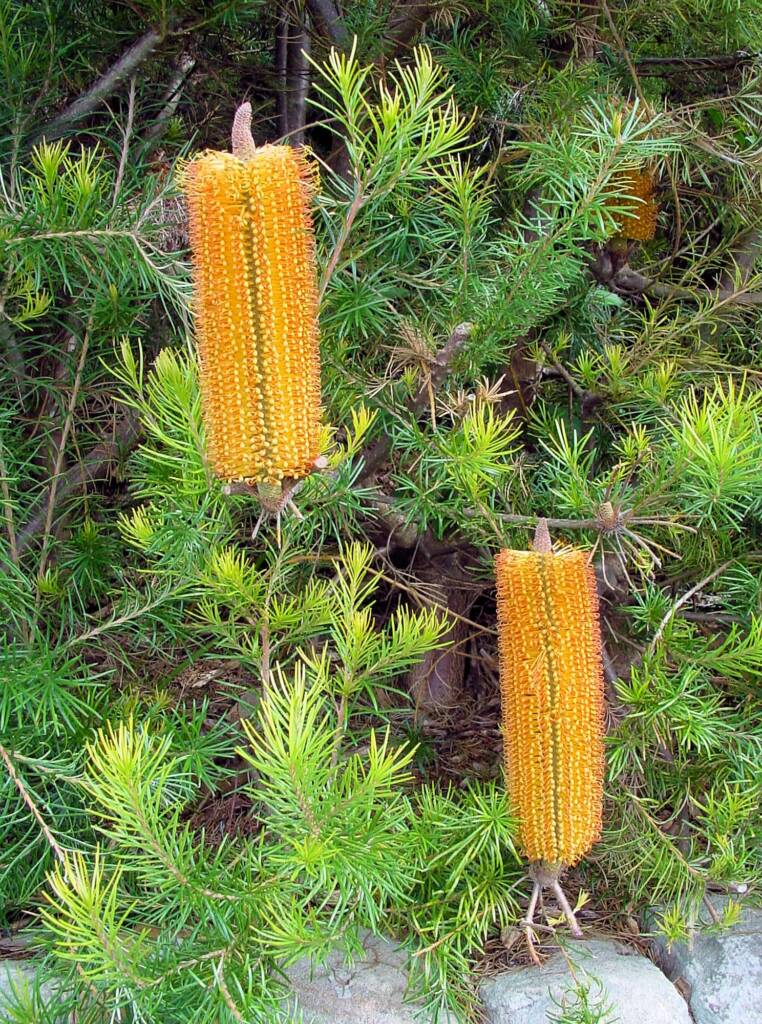
BanksiaBanksia Index Banksia ashbyi (Ashby’s Banksia) Banksia baxteri (Baxter’s Banksia) Banksia caleyi (Red Lantern Banksia / Caley’s Banksia) Banksia ericifolia Banksia grandis (Bull Banksia) Banksia integrifolia ssp. integrifolia Banksia media (Southern Plains Banksia) Banksia praemorsa (Cut-leaf Banksia) Banksia prionotes (Acorn Banksia) Banksia quercifolia (Oak-leaved Banksia) Banksia serrata (Saw Tooth Banksia) Banksia spinulosa x ericifolia ‘Giant Candles’
FloraFlora in Australia Flora Index Acacia Anigozanthos (Kangaroo Paws) Annual Yellowtop Apium prostratum subsp. prostratum var filiforme Apple Bush (Pterocaulon sphacelatum) Australian Bluebell Australian Gossypium Banksia Batswing Coral Tree Billy Buttons Birdsville Indigo Blue Pincushion Bush Banana Callistemon Callitris drummondii (Drummond’s Cypress Pine) Calothamnus quadrifidus Cape Honeysuckle Cassia fistula (Golden Shower) Cattle Bush Common Heath Crotalaria Darwinia wittwerorum (Wittwer’s Mountain Bell) Daviesia oppositifolia (Rattle-pea) Desert Oaks Drumsticks Eremophila Eucalyptus Ficus Flannel Cudweed (Actinobole uliginosum) Georges Indigo Goatshead Burr (Sclerolaena bicornis) Golden Everlasting Goodenia Gossypium Grass and Grasses Grass Trees Grevillea Grey Germander Hakea Kapok Bush (Aerva javanica) Lambertia sp Leptospermum MacDonnell Ranges Cycad Maireana scleroptera Mexican Poppy Minnie Daisy Mistletoe Family Nardoo Native Apricot Nicotiana megalosiphon subspecies sessilifolia Nuytsia floribunda Orange Spade Flower Orchidaceae Parakeelyas (Calandrinia) Pebble Bush (Stylobasium spathulatum) Perennial Yellow Top Pink Everlasting Pink Rock Wort Poached Egg Daisy Portulaca Proteaceae Ptilotus Quandong Resurrection Fern Rosy Dock Ruby Saltbush Santalum Solanum Spike Centaury Spinifex Storkbill (Erodum cygnorum) Striped Mint Bush Sturt’s Desert Pea Sturt’s Desert Rose Tall Saltbush Tangled Leschenaultia Tar Vine Tribulus eichlerianus Upside-down Plant Urodon dasyphylla Variable Daisy Waratah (Telopea) Wertabona Daisy White Cedar (Melia azedarach) White Indigo White Paper Daisy Wild Passionfruit Wild Stock Woolly-Headed Burr Daisy Woolly Bush Yellow-keeled Swainsona
Flora & FaunaFauna Flora Fauna Flora Funga Glossary Funga Related Topics Scientific Classification Backyard Wildlife Floral Emblems of Australia Wildflowers
